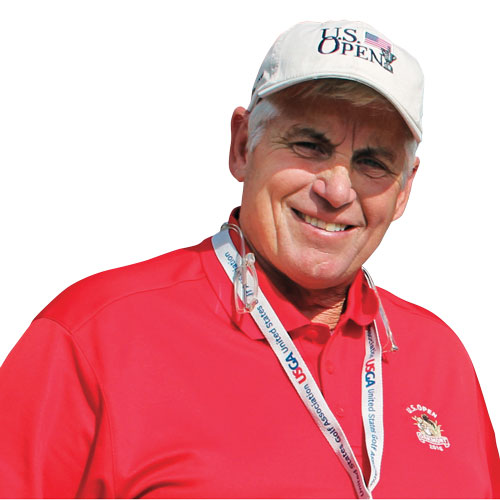What a superintendent can expect in the days after hosting a professional tournament
I volunteered a tremendous amount at events during my career as a superintendent. I worked three Masters as an assistant superintendent at Augusta National, then volunteered at 10 Masters. I participated in one PGA Championship, three U.S. Opens, two U.S. Amateurs and a Senior Open. Most of the time, I worked for someone else.
In 2013 I hosted the U.S. Open at Merion GC. It’s a downer when it’s your place and the tournament ends. There’s no doubt about it.
The 2013 U.S. Open was very wet. We had 7 1/2 inches of rain at the beginning of the week. When you have wet conditions, you have a lot of damaged turf. At Merion, laying a ton of sod just doesn’t work. It’s an old native course. Pure strains of grass won’t look great.
The crew is worn out. The energy the volunteers brought is gone. The day after the championship, the members want to get out and play the course. You just come in, do a fast prep and then send everyone home so they can get a good night’s sleep.
It’s a grind
You hit a grind, trying to clean everything up. They spend forever getting everything set up — the chalets, the merchandise tent, the player’s lounge — but it only takes them about three days to get out of there.
They rip, they tear. You have to stay on top of them to avoid a lot of collateral damage. You have to be a strong leader and tell them, ‘Look, this is the way it is. This was part of the deal.’
We tried to get as much turf back naturally as possible to limit the sodding. But the U.S. Open was in June, and we’re in Philadelphia. In July, August and September you hang on by your fingernails and teeth because there is nothing easy about recovering from all that damage through October.
Member support
I will say that at Merion, the members were extremely supportive. We had a lot of dead turf. The driving range was essentially destroyed — there is nothing living underneath all that decking and merchandise. It was completely devastated. I told the members: This is a golden opportunity to do a range project. So, we did. We spent $2 million and did a really great range.
You must do that budgeting up front when they’re all fired up. When the membership is in high gear, they’re receptive to anything. After it’s over and the moment has passed? They want to get out there and golf.
Strong leadership
You have to be a strong leader when it’s all over, or the morale will get low. The tournament is a big deal, but the crew is tired. The volunteers gave them a ton of juice, but now they’re gone. Everyone has pulled out of Dodge and we’re the ones holding the bag. That’s a hard feeling.
The guys are all pie-eyed and they’re not looking forward to topdressing and verticutting, seeding and hand-watering and all the drudgery it takes to get the course back for July play.
We flooded during the U.S. Open, but we rebuilt a bunker in a little over 30 minutes. When you have a bunch of fired-up kids, you can do anything. They must have put hundreds of buckets of wet sand into carts. Then came back and walked buckets of dry sand across a fairway and put it back in — because we couldn’t bring equipment on the course because of the flooding.
Dave McDonald is a good photographer and was our in-house historian. I told Dave to take a lot of photos of the damage we incurred. Because in 30, 40, 50 days when the members ask me, ‘What is going on over here?’ we’ll show them the photos as a refresher of what it looked like.













